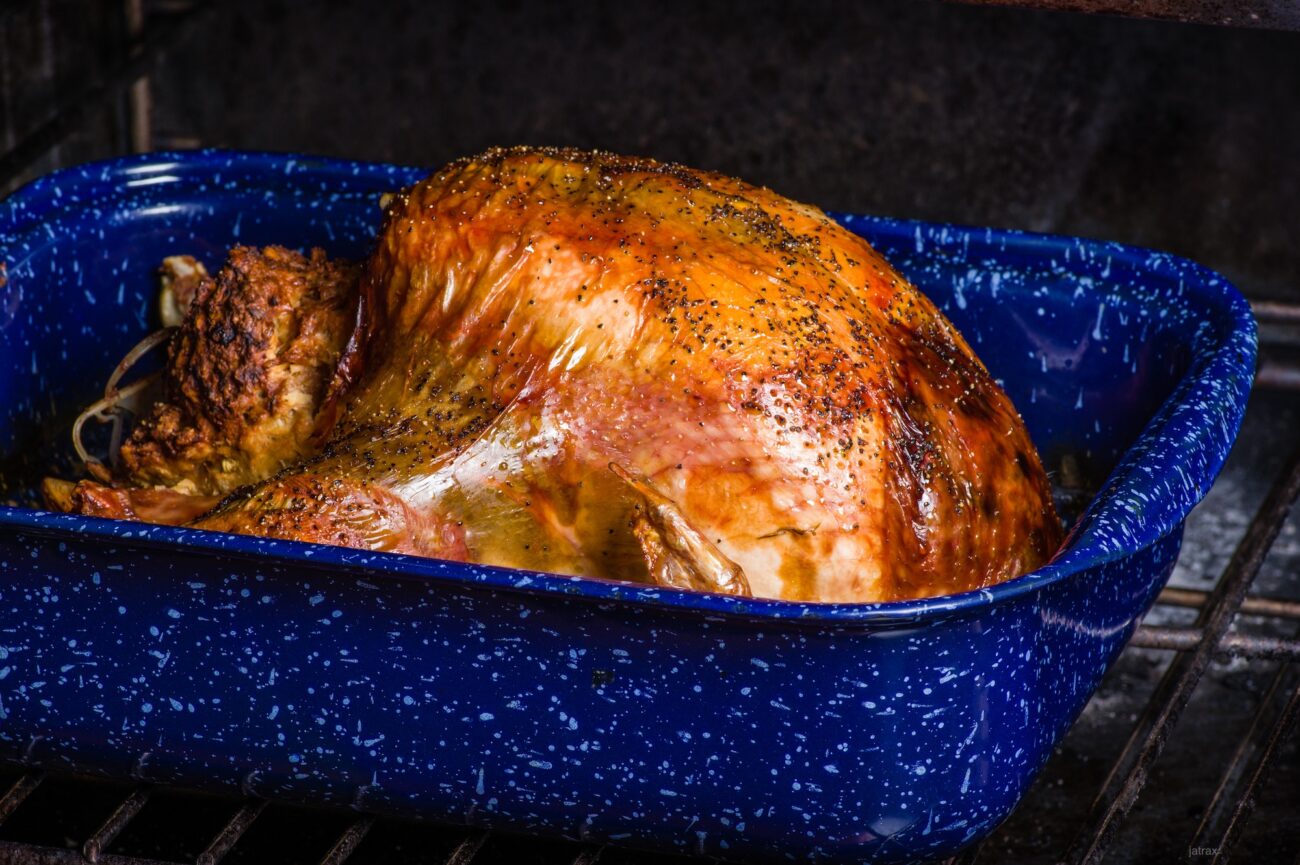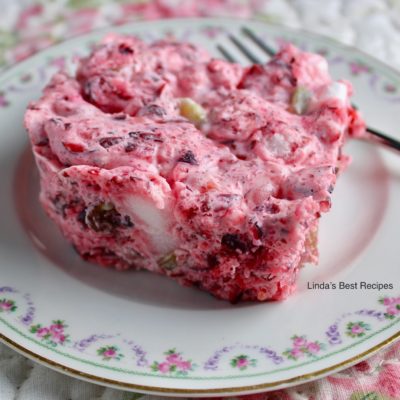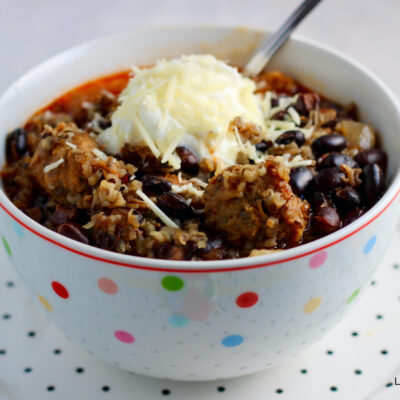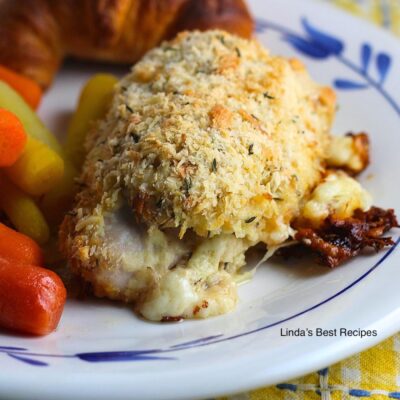About This Recipe
While everyone has their favorite Thanksgiving turkey, I always turn to this one: my great-grandmother’s Thanksgiving turkey recipe. (And it should be stuffed with My Great-Grandmother’s Stuffing!) This method is easy and foolproof and makes a delicious, beautifully-browned turkey that is moist and juicy. Yum.
There are several things you should know about the Thanksgiving turkey. First, I always look for one that is about 12 to 14 pounds; I think that size is best for juiciness and tenderness. If you are feeding more than 6 to 8 people, buy another bird rather than choosing a larger one.
I try to find a fresh turkey, but they can be difficult. If you are buying a frozen turkey, never ever ever thaw your turkey on the counter. It must – must – be thawed in the refrigerator. There are methods for thawing a turkey that are faster (see the USDA for the safe methods), but the long slow thaw in the fridge is really the best. Be aware that this can take a long time. You should allow about 24 hours in the refrigerator for every four to five pounds of bird. So for a 12 pound bird, allow a minimum of three days. Or, did you know you can cook a frozen turkey?
This method includes a step for making a broth with the turkey neck and giblets that is used in My Mother’s Gravy recipe. Don’t skip this step; these items add a richness that you cannot duplicate.
Experts recommend that you do not stuff your turkey for food safety reasons. If you want to anyway (use My Great-Grandmother’s Turkey Stuffing!), never stuff the turkey ahead of time, stuff the turkey loosely without compacting the stuffing, check the temperature in the center of the stuffing before you remove the turkey from the oven (it should be at least 165°F), remove the stuffing from the turkey after a 15 minute rest, and refrigerate the stuffing promptly when you’re done eating.
Tips for the best My Great-Grandmother’s Thanksgiving Turkey
- Make sure the turkey is completely thawed before you begin.
- Do not substitute margarine for the butter; the butter is key to the best flavor.
- You can find cheesecloth, which is no longer a common household item, in most grocery stores.
- Check the temperature of the finished bird with a reliable food thermometer in three places; the drumstick, the inner part of the thigh, and the breast. Be careful to avoid bone.
Why this recipe works
- The cheesecloth helps keep the turkey moist as it roasts.
- The butter adds great flavor.
Steps
|
1
Done
|
First, do not rinse the turkey. This will only spray bacteria around your kitchen and is not necessary. |
|
2
Done
|
Second, remove the giblet package from the cavity. Put the heart, gizzard, and neck in a large saucepan and cover with cold water. Put it on the stove, bring to a boil, reduce the heat, cover, and simmer for 2 hours. When the broth is done, strain it, discarding the solids, and refrigerate. |
|
3
Done
|
Now preheat the oven to 325°F. Pat the turkey dry with paper towels. Season inside and out with the salt, marjoram, and pepper. If you are planning to stuff the bird, do that now; do not press the stuffing down. |
|
4
Done
|
I do not truss the turkey because it interferes with the roasting. If you stuffed the turkey, place a piece of bread in the cavity opening to keep the stuffing moist. |
|
5
Done
|
Place the turkey in a roasting pan and brush with some of the melted butter. Top with the cheesecloth and drizzle the rest of the butter on the cloth. |
|
6
Done
|
Roast the turkey for 15 to 17 minutes per pound for an unstuffed bird, or 20 to 22 minutes per pound for a stuffed turkey. Baste the bird occasionally with the drippings in the pan. Take the cheesecloth off the turkey after 2-1/2 hours so it can brown. |
|
7
Done
|
Check the temperature of the turkey and the stuffing with a reliable thermometer. If those temperatures are correct, remove the turkey from the oven. |
|
8
Done
|
Cover the turkey loosely with foil and let stand for 15 minutes. Remove the stuffing and put it into a serving bowl, then carve the bird and eat. |








